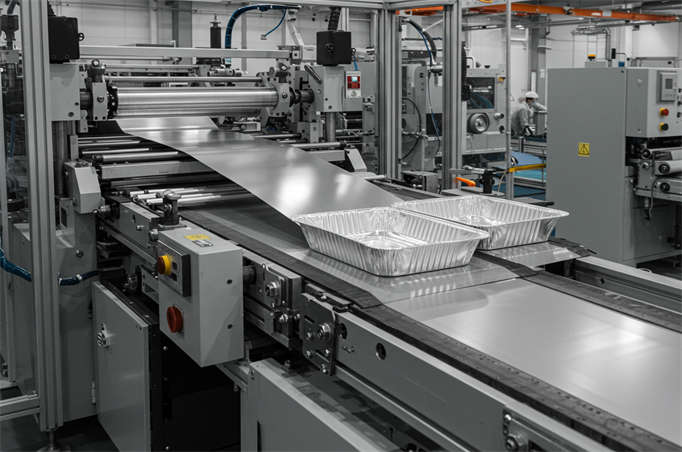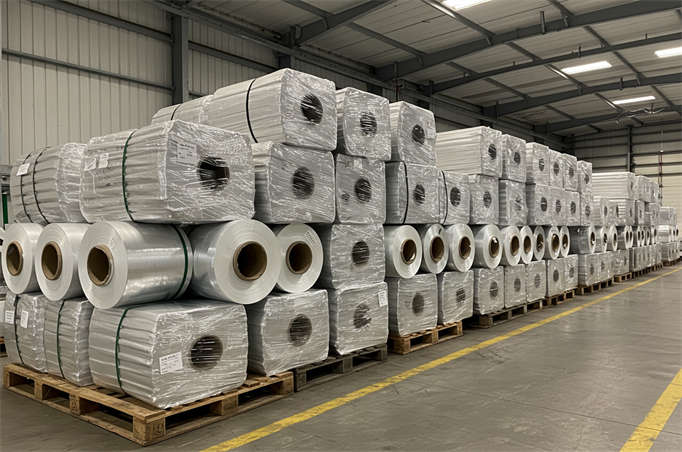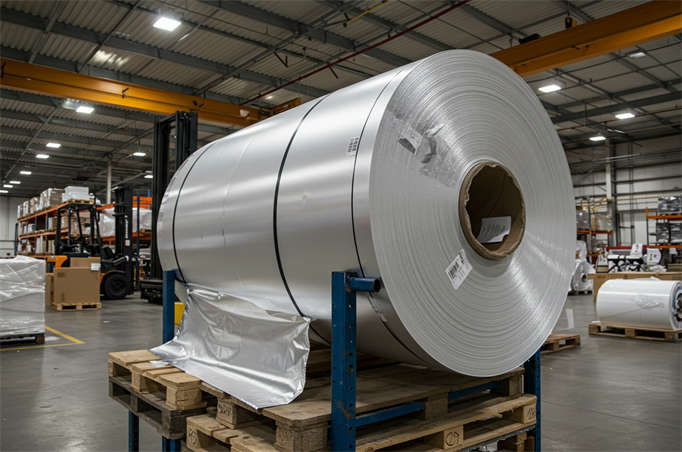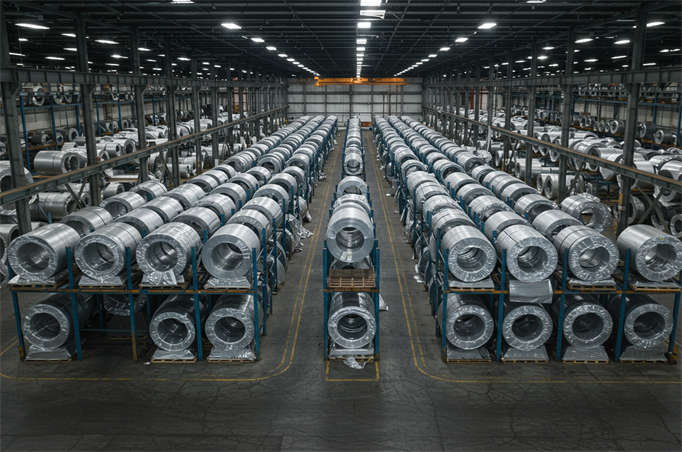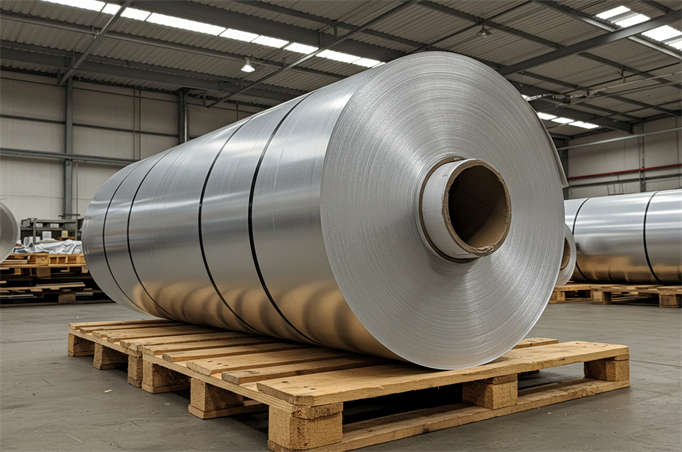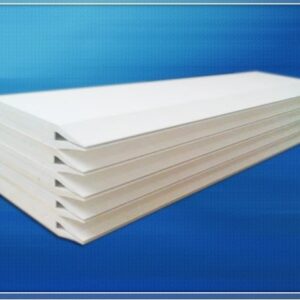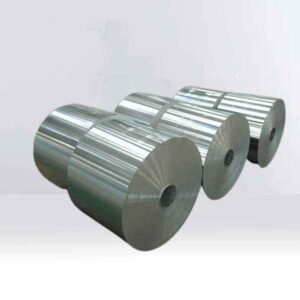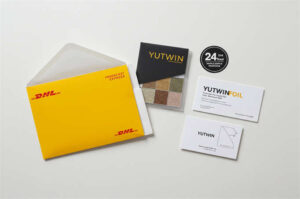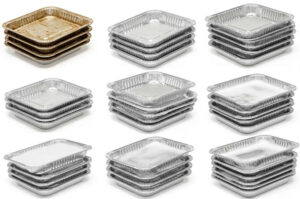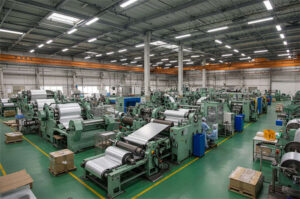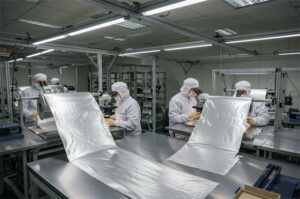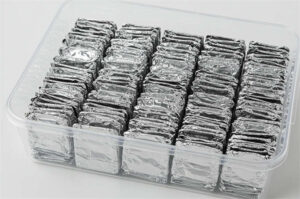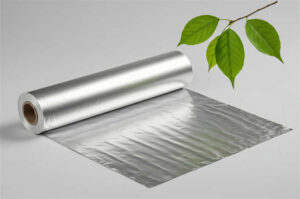مواد يوتوين الجديدة: Precision in Aluminum Foil Production
At Yutwin New Materials, we take pride in our meticulous approach to aluminum foil production, ensuring each step is executed precisely and carefully. From the careful selection of high-purity aluminum ingots to the final quality inspection, our process is designed to deliver aluminum foil that meets the highest performance and safety standards. This blog post offers an in-depth look at how we transform raw aluminum into versatile and reliable foil products trusted by industries worldwide.
How is Aluminum Foil Made?
The key steps in the aluminum foil production process are as follows:
Raw Material Preparation
The primary raw material for aluminum foil is high-purity aluminum ingots or blocks, typically with a purity of over 99.9%. The aluminum blocks must be smelted to ensure the smooth processing of subsequent steps.
Smelting and Calcination
The aluminum blocks are heated to high temperatures (around 700°C) and melted into liquid aluminum. The liquid aluminum is then cast into aluminum plates or ingots using a continuous casting system, providing the base material for subsequent cold rolling.
Rolling Process
- الدرفلة على الساخن: Aluminum ingots are hot rolled at high temperatures (480°C-500°C) to form aluminum billets of a certain thickness.
- Finishing Rolling: The aluminum billets undergo multiple cold rolling passes. By adjusting the rollers, temperature, and cooling, مصنعي رقائق الألومنيوم ensure the foil’s thickness is uniform and the surface is smooth.
- الدرفلة على البارد: The aluminum foil undergoes further processing to improve its tensile properties and surface quality. The final foil thickness ranges from 0.006mm to 0.2mm.
التلدين
The aluminum foil is heated and slowly cooled to remove internal stress, enhancing its ductility and flexibility.
معالجة السطح
Any oil stains or oxide layers on the foil’s surface must أن يتم تنظيفها and treated to ensure the foil maintains a shiny finish and meets hygiene standards.
Quality Inspection and Packaging
The aluminum foil is subjected to rigorous quality inspections, including thickness, surface quality, and tensile properties. Once it passes these checks, it is packaged and ready for the market.
The aluminum foil manufacturing process is intricate, and every step requires precise parameters to ensure the final product meets the desired quality and specifications.
What Quality Inspections Are Required During Aluminum Foil Production?
Quality inspections must be conducted throughout the aluminum foil production to ensure the product meets the required standards and usage specifications. Below are everyday quality inspection items:
Appearance Inspection
- Surface Defect Detection: Using high-precision optical equipment or manual visual inspection, along with image processing technology, the surface of the foil is checked for defects like dents, oil stains, smudges, peeling, scratches, creases, foreign objects, pinholes, burrs, black spots, patterns, etc.
- Surface Cleanliness: Checking whether the aluminum foil’s surface has oil, dirt, or other contaminants.
- Flatness: Ensuring the foil’s surface is smooth and free of unevenness.
- Color Consistency: Check that the foil’s tone is uniform, with no noticeable color differences.
- Glossiness: Measuring the foil’s reflective properties to evaluate its gloss.
Process Performance Testing
- Thickness Measurement: Ensuring the physical thickness of the foil is uniform and within specifications.
- Width and Length Inspection: Checking the foil’s dimensions, such as width and length, to ensure they meet specifications for covering or packaging.
- Compression Strength: Measuring the maximum force the foil can withstand without cracking.
- Tensile Strength: Assessing the foil’s elongation before rupture.
- Tear Strength: Testing the foil’s resistance to wear.
- Hardness Testing: Checking the foil’s ability to resist physical deformation, such as indentation or scratching.
- Heat Sealing Strength: Evaluating the bonding strength after heat sealing.
- Heat Resistance Testing: Assessing the foil’s stability at high temperatures.
- Dimensional Precision: Ensuring thickness, width, and other key dimensions meet specified tolerances.
Chemical Performance Testing
- Corrosion Resistance Testing: Determining the foil’s resistance to specific chemicals.
- Aluminum Content Measurement: Analyzing the specific aluminum composition of the foil.
- Heavy Metal Testing: Checking for harmful heavy metals like lead, cadmium, and mercury in the foil.
- Organic Solvent Residue Detection: Analyzing any residual organic solvents in the foil product.
- Volatile Compound Testing: Checking for volatile substances present in the foil.
Protective Performance Testing
- Gas Permeability: Measuring the rate at which gases pass through the foil.
- Water Vapor Permeability: Testing the foil’s ability to prevent water penetration.
Hygiene and Safety Checks
- Microbial Barrier System Test: Assessing the foil’s ability to prevent microbial passage.
- Microbial Limit Test: Ensuring that the number of microorganisms on the foil does not exceed safe limits.
- Sterility Test: Verifying that the foil meets sterility standards and is microbial contamination-free.
Special Performance Testing
- Electromagnetic Shielding Efficiency: Measuring the foil’s effectiveness in blocking electromagnetic interference.
- Transmission Rate Inspection: Determining the proportion of light or radiant energy transmitted through the foil’s surface.
- UV Protection Testing: Testing the foil’s ability to resist ultraviolet radiation-induced aging or discoloration.
Different types of aluminum foil may require different test reports. For example, pharmaceutical aluminum foil needs microbial limit testing and sterility tests, while food-grade aluminum foil requires food contact safety evaluations. Electronic aluminum foil may undergo electrical performance tests like conductivity and resistance testing.
How Much Does Aluminum Foil Thickness Testing Cost?
The key standard for testing aluminum foil thickness is GB/T 22638.1-2016: Methods for Measuring Aluminum Foil Thickness, Part 1: Thickness Measurement. The main testing methods and applicable industries include:
- Weight Method
- Primary Use: Suitable for measuring thicknesses of non-composite foils thinner than 0.10mm.
- Principle: The thickness and surface density of the foil are calculated by measuring its weight over a known area and applying the material density.
- Vertical Optical Gauge Method
- Primary Use: Suitable for measuring thicknesses of composite foils thinner than 0.10mm.
- Principle: This method uses an optical gauge to measure the thickness based on optical principles.
- Digital Micrometer Method
- Primary Use: Suitable for measuring foil thicknesses of 0.10mm or thicker.
- Principle: A digital micrometer directly measures the foil’s thickness, which is ideal for thicker foils.
Testing Procedure:
- Sampling: Samples are taken from the smooth area of the foil, avoiding wrinkles or defects.
- Weighing: The foil sample is weighed using an analytical balance with a sensitivity of 0.1mg.
- Calculation: Thickness and surface density are determined by the sample’s weight, area, and the foil’s density.
- Environmental Conditions: Testing should occur under standard conditions, with a temperature of 23°C ± 2°C and relative humidity of 50% ± 5%.
- Sample Handling: Samples should be flat and free from defects like creases or oil contamination.
- Accuracy: Ensure the precision of the measuring instruments.
General Thickness Requirements for Aluminum Foil:
- تغليف المواد الغذائية: رقائق الألومنيوم typically has a thickness between 0.006mm and 0.2mm.
- التعبئة والتغليف الصيدلاني: Aluminum foil used for pharmaceuticals generally has a thickness between 0.020mm and 0.045mm.
These standards ensure accurate measurement of aluminum foil thickness, maintaining the performance and quality required across various applications.
Yutwin New Materials: Committed to Quality and Innovation in Aluminum Foil Production
Yutwin New Materials is a leader in the aluminum foil industry, driven by a commitment to quality and innovation. Our rigorous production processes and unwavering attention to detail ensure that every batch of aluminum foil exceeds quality, functionality, and safety expectations. As we continue to push the boundaries of what aluminum foil can achieve, we invite you to explore how our products can elevate your packaging needs and contribute to a sustainable future.

